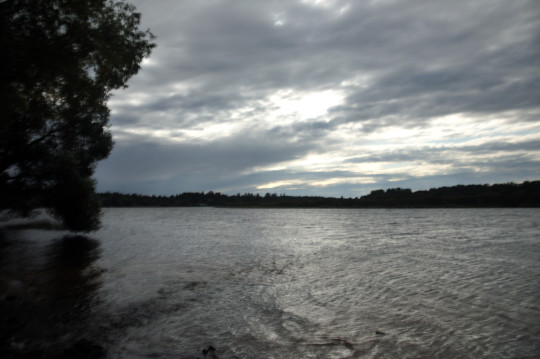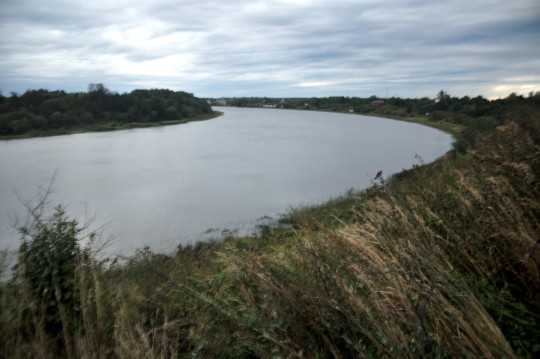#staraja ladoga
Explore tagged Tumblr posts
Text

Volkhov riv., Old Ladoga, Leningradskaja oblast', Russia
#leningrad oblast#leningradskaia oblast#leningradskaja oblast#leningradskayaoblast#leningrad rg#landscape#volkhov#old ladoga#ladoga#staraja ladoga#russia#river#riverside#rivershore#river shore#small town
56 notes
·
View notes
Photo

[Ring in a style was common in the arabic speaking region. The text on the stone reads Allah in arabic Kufic script. from about 800 - 1099. found in Birka, a viking age period trading port located in modern day Sweden. Photo: Christer Åhlin. SHM archeological collection]
I am trying to drop subtle hints that:
1. islam was most likely a known religion for the norse iron age people of the viking age period. someone during the viking age period used this ring in Birka after all!
2. the nordic countries never were, and never have been, isolated from the rest of the eurasian continent+african continent.
Literature references
Mikkelsen, E. 2008. The Vikings and Islam. I Brink, S. & Price, N. (red.).The Viking World. London & New York
Jansson, I. 1988. Wikingerzeitlicher orientalischer Import in Skandinavien. I Oldenburg – Wolin – Staraja Ladoga – Novgorod – Kiev. Handel und Handelsverbindungen im südlichen und östlichen Ostseeraum während des frühen Mittelalters. Bericht der Römisch-Germanischen Kommission Band 69. Mainz
click for more info in swedish from historiska museet
#norsesuggestions#history of islam#kufic script#history of sweden#swedish history#norse iron age#realstoriesfromthevikingage#birka#nordic history#history of scandinavia
51 notes
·
View notes
Photo

Oleg (882—912)
Oleg auf einem Gemälde von Wiktor Wasnezow Oleg, genannt „der Prophet“, (kyrillisch Олег; altostslawisch Ольгъ; altnordisch Helgi; † 912 oder 922) war ein warägischer Herrscher der Rus. Er stammte aus dem Geschlecht der Rurikiden und soll 879 als Regent für Igor, den Sohn Ruriks, die Herrschaft über den altrussischen Staat übernommen haben. In seine Amtszeit fiel die Verlagerung des Herrschaftszentrums der Rurikiden von Nowgorod nach Kiew, Oleg gilt daher als Begründer der Kiewer Rus. Wie bei allen anderen altrussischen Herrschern des 9. Jahrhunderts ist auch bei Oleg nicht endgültig klar, ob es ihn tatsächlich gegeben hat, oder ob es sich bei ihm um eine Legendengestalt handelt. Die Verlagerung des rurikidischen Herrschaftszentrums von Nowgorod nach Kiew zur Zeit Olegs ist jedoch eindeutig belegt. Mit der Kontrolle über diese strategisch günstig an Fernhandelswegen gelegenen Siedlung begann die Bildung des rurikidischen Großreiches. Die mögliche Grabstätte Olegs am Fluss Wolchow nahe Staraja Ladoga Zu den wenigen gesicherten Daten, die mit Oleg in Verbindung gebracht werden, gehören ein großer Kriegszug gegen Konstantinopel im Jahr 907 und ein Handelsvertrag mit dem byzantinischen Kaiser aus dem Jahr 911. Oleg starb angeblich 912. In dieser Zeit war die Rus noch nicht christianisiert. Konfrontationen mit dem Christentum sah sich die Bevölkerung durch christlich-orthodoxe Siedlungen an der Schwarzmeerküste gegenüber, worauf die spätere orthodoxe Prägung Russlands zurückgeht. Oleg machte die ostslawischen und finnischen Stämme des Wolga-Oka-Gebietes tributpflichtig. Teilnehmer am Zug nach Konstantinopel 907 waren Waräger, Ilmensee-Slowenen, Tschuden, Slowenen, Kriwitschen, Merer, Drewlanen, Radimitschen, Poljanen, Sewerjanen, Wjatitschen, Chorwaten, Duleben, Tiwerzen. Mehr Details Android, Windows
0 notes
Text

Volkhov riv., Old Ladoga, Leningradskaja oblast', Russia
#leningrad oblast#leningradskaia oblast#leningradskaja oblast#leningradskayaoblast#leningrad rg#landscape#volkhov#old ladoga#ladoga#staraja ladoga#russia#river#riverside#rivershore#river shore#nature#nature photography#naturephotography
64 notes
·
View notes
Text

Old Ladoga, Leningradskaja oblast', Russia
#volkhov#river#riverside#castle#leningrad oblast#leningradskaia oblast#leningradskaja oblast#leningradskayaoblast#leningrad rg#landscape#old ladoga#ladoga#staraja ladoga#russia#small town
84 notes
·
View notes
Text

Old Ladoga, Leningradskaja oblast', Russia
#leningrad oblast#leningradskaia oblast#leningradskaja oblast#leningradskayaoblast#leningrad rg#landscape#old ladoga#ladoga#staraja ladoga#russia#small town
42 notes
·
View notes
Text

River Volkhov, Leningradskaja oblast', Russia
#leningrad oblast#leningradskaia oblast#leningradskaja oblast#leningradskayaoblast#leningrad rg#landscape#volkhov#old ladoga#ladoga#staraja ladoga#russia#river#riverside#rivershore#river shore#nature#nature photography#naturephotography
48 notes
·
View notes
Text

Volkhov riv., Old Ladoga, Leningradskaja oblast', Russia
#leningrad oblast#leningradskaia oblast#leningradskaja oblast#leningradskayaoblast#leningrad rg#landscape#volkhov#old ladoga#ladoga#staraja ladoga#russia#river#riverside#rivershore#river shore#nature#nature photography#naturephotography
50 notes
·
View notes
Text

Old Ladoga, Leningradskaja oblast', Russia
#volkhov#river#riverside#castle#leningrad oblast#leningradskaia oblast#leningradskaja oblast#leningradskayaoblast#leningrad rg#landscape#old ladoga#ladoga#staraja ladoga#russia#small town
64 notes
·
View notes
Text

Old Ladoga, Leningradskaja oblast', Russia
#leningrad oblast#leningradskaia oblast#leningradskaja oblast#leningradskayaoblast#leningrad rg#landscape#old ladoga#ladoga#staraja ladoga#russia#small town#wooden houses#wooden#travel#travelphotography
44 notes
·
View notes
Text

Old Ladoga, Leningradskaja oblast', Russia
#castle#leningrad oblast#leningradskaia oblast#leningradskaja oblast#leningradskayaoblast#leningrad rg#landscape#volkhov#old ladoga#ladoga#staraja ladoga#russia#river#riverside#rivershore#river shore#small town
45 notes
·
View notes
Text

Volkhov riv., Old Ladoga, Leningradskaja oblast', Russia
#leningrad oblast#leningradskaia oblast#leningradskaja oblast#leningradskayaoblast#leningrad rg#landscape#volkhov#old ladoga#ladoga#staraja ladoga#russia#river#riverside#rivershore#river shore#nature#nature photography#naturephotography
38 notes
·
View notes
Text

Old Ladoga, Leningradskaja oblast', Russia
#river#riverside#castle#leningrad oblast#leningradskaia oblast#leningradskaja oblast#leningradskayaoblast#leningrad rg#landscape#volkhov#old ladoga#ladoga#staraja ladoga#russia#small town#small town church#church
46 notes
·
View notes